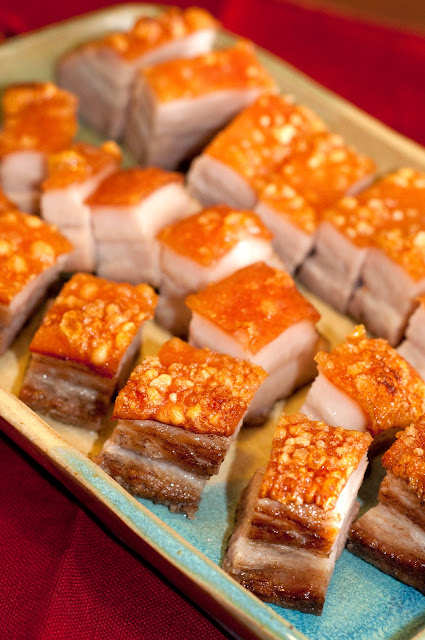All my friends are in Hawaii without me! Granted, this is blatant exaggeration, but still, it's remarkable that four different sets of friends are all there on vacation or honeymoon (Congratulations Heidi and Fara!!). While they're in Hawaii enjoying palm trees, cloudless skies, and turquoise waters, I'm stuck in San Diego with all the palm trees, cloudless skies, and... hmm. Admittedly, San Diego itself is no slouch in the paradise department, but there's no place else quite like Hawaii. And if I can't be in Hawaii, I might as well eat like I'm there!
The first time I had poke (pronounced poh-keh) was during a visit to my friend Rachel's house in Oahu. While I'd been to Hawaii before with my family, it's a different experience all together when you've got the low-down on all the local eats. A substantial part of the trip centered around food, and in fact, for one particularly lavish dinner, we even took before + after photos--proof of our 6 month-sized food babies. We feasted on everything from shave ice at Matsumoto's, to spam musubis at 7-eleven, shrimp trucks on North Shore, and of course, poke.
At first glance, my impression of poke wasn't overwhelming; I was greeted by several unassuming containers from Foodland (a local grocery store), but upon opening the lids, the sight of these luscious chunks of ahi made my mouth immediately water. The simple sesame-shoyu dressing doesn't overpower, but rather enhances, the fresh flavor of the fish. And to clarify, when I say fresh, I mean really fresh--totally raw. Throughout my childhood, my parents were constantly paranoid about the dangers of less-than-fully cooked meat, and it wasn't until college that I started to embrace the joy of runny eggs, rare steak, and still-pink pork. In fact, it was around the time of this first poke encounter that I had begun dipping my toes into the world of sushi and raw fish. And so, not one to miss out on a true Hawaiian treat, and like the intrepid diner I am, I just dived right in for that first delicious bite of poke and haven't looked back since.
 |
| Left to right: Garnished with sesame seeds, scallions, and nori. |
Total Recipe Cost: $14.95 for 3 servings!

While I like to consider myself an expert at eating Hawaiian food, I certainly can't claim to be an expert at cooking authentic Hawaiian cuisine. But, thank goodness I have friends from Hawaii to consult with (thanks Mikey)!
½ lb ahi tuna, sushi grade
1 large shallot
2 stalks scallions*
1 tablespoon soy sauce (called shoyu in Hawaii)
2 teaspoons sesame oil
1 teaspoon Sriracha sauce (or similar)
½ teaspoon sesame seeds
Cut the tuna into bite-sized chunks. Then, mince the shallots and scallions, setting aside some minced scallions for garnish. Mix everything together. Garnish with scallions or additional sesame seeds, and serve chilled as an appetizer! Take a bite, then close your eyes and pretend to be in Hawaii…
Ingredients
|
Unit Cost
|
Total Cost
|
½ lb ahi tuna, sushi grade
|
$28.99/lb
|
$14.50
|
1 large shallot
|
$0.59/lb
|
$0.15
|
2 stalks scallions*
|
$0.33/bundle
|
$0.11
|
1 T soy sauce
|
$0.08/oz
|
$0.04
|
2 t sesame oil
|
$0.36/oz
|
$0.12
|
1 t Sriracha sauce
|
$0.15/oz
|
$0.03
|
½ t sesame seeds
|
negligible
|
|
TOTAL
|
$14.95
|
 *As mentioned in a previous post, scallions are ridiculously easy to grow! Watering is
*As mentioned in a previous post, scallions are ridiculously easy to grow! Watering is 
















